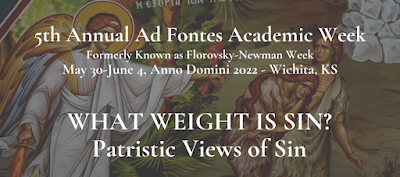From Fr. Christopher George Phillips, the retired founding pastor of Our Lady of the Atonement Church in San Antonio, Texas, a parish of the Personal Ordinariate of the Chair of Saint Peter, comes this
reflection on the May 4th feast of Catholic Martyrs of England and Wales:
The English Martyrs include 284 men and women who gave their lives during the 16th and 17th centuries. They were martyred simply because they remained steadfast in their Catholic faith. What had happened?
King Henry VIII had proclaimed himself supreme head of the Church in England, claiming for himself and his successors power over his subjects not only in civil matters, but also in all things spiritual. He took to himself a spiritual power that can belong only to the Pope as the Vicar of Christ and Successor of St. Peter. The Catholics at that time wanted to be loyal subjects of the Crown, but their consciences could not allow them to grant the power of spiritual supremacy. It is as though, in the United States, the president and Congress took upon themselves the power to determine what we as Catholics believe, and how we worship. We could not allow Congress to pass laws that changed the Church’s teaching about the Mass, or what we believe about God. But this was what had happened in England and Wales. This was what led many people to face death courageously rather than act against their consciences and deny their Catholic faith.
Please read the rest
there.
This Feast, honoring all the martyrs, canonized and beatified, is celebrated in the Anglican Ordinariate* and in the dioceses of England on May 4th, the date of the execution of the Protomartyrs in 1535 (Saints John Houghton, Augustine Webster, Robert Lawrence, Richard Reynolds, and Blessed John Haile); in the dioceses of Wales, their Feast, known as the Feast of Six Welsh Martyrs and [English] Companions, is celebrated on October 25th, the date that Pope Saint Paul VI canonized the 40 Martyrs of England and Wales in 1979.
*Please note that is celebrated as a Feast in the Anglican Ordinariate of Our Lady of Walsingham, but as a Memorial in the Ordinariates of the Chair of St. Peter in North American and of Our Lady of the Southern Cross in Australia.
According to the Liturgical Calendar of England:
The English Men and Women martyred for the Catholic Faith 1535–1680 and beatified or canonised by the Holy See. On this day in 1535 there died at Tyburn three Carthusian monks, the first of many martyrs, Catholic and Protestant, of the English reformation. Of these martyrs, forty two [including Saints John Fisher and Thomas More, and the six Welsh Martyrs] have been canonised and a further two hundred and forty two declared blessed, but the number of those who died on the scaffold, perished in prison, or suffered harsh persecution for their faith in the course of a century and a half cannot now be reckoned. They came from every walk of life; there are among them rich and poor, married and single, women and men. They are remembered for the example they gave of constancy in their faith, and courage in the face of persecution.
The Six Welsh Martyrs, listed on the
website of the Liturgical Calendar of Wales are: Saints John Jones, Philip Evans, John Lloyd, David Lewis, Richard Gwyn, and John Roberts. Saints Evans, Lloyd, Lewis, and Gwyn were executed in the throes of the Popish Plot in 1679.
Holy Catholic Martyrs of England and Wales, pray for us!







